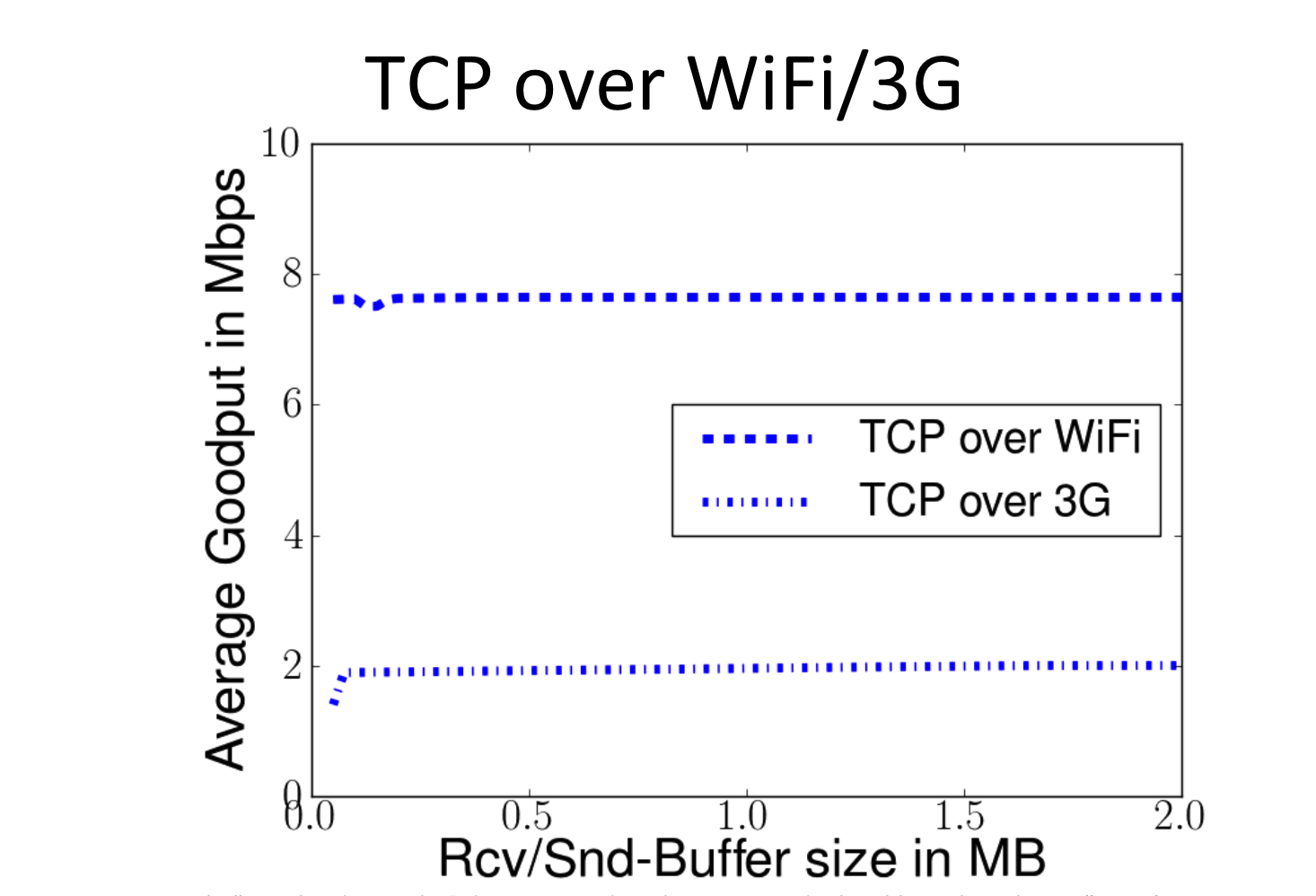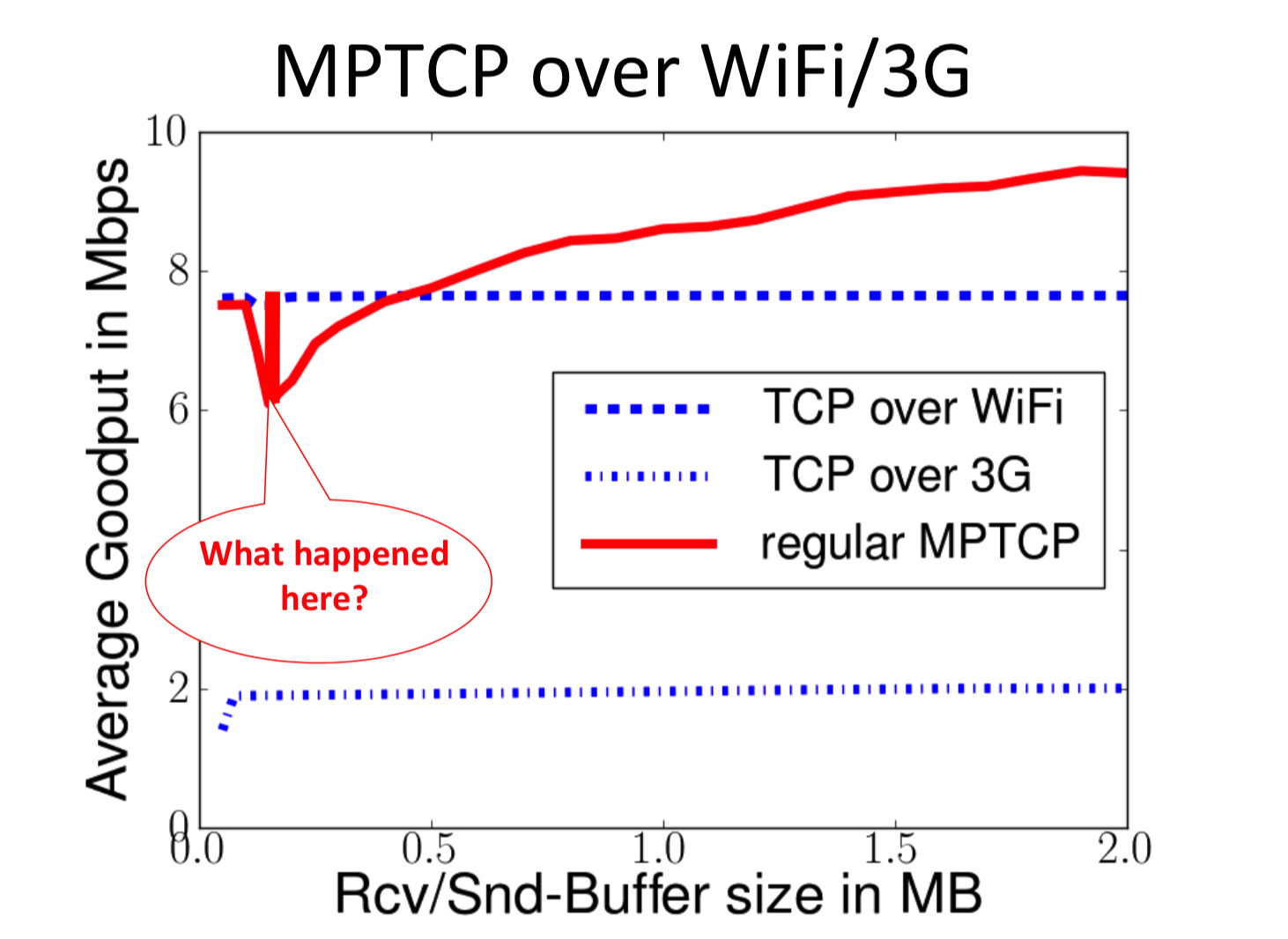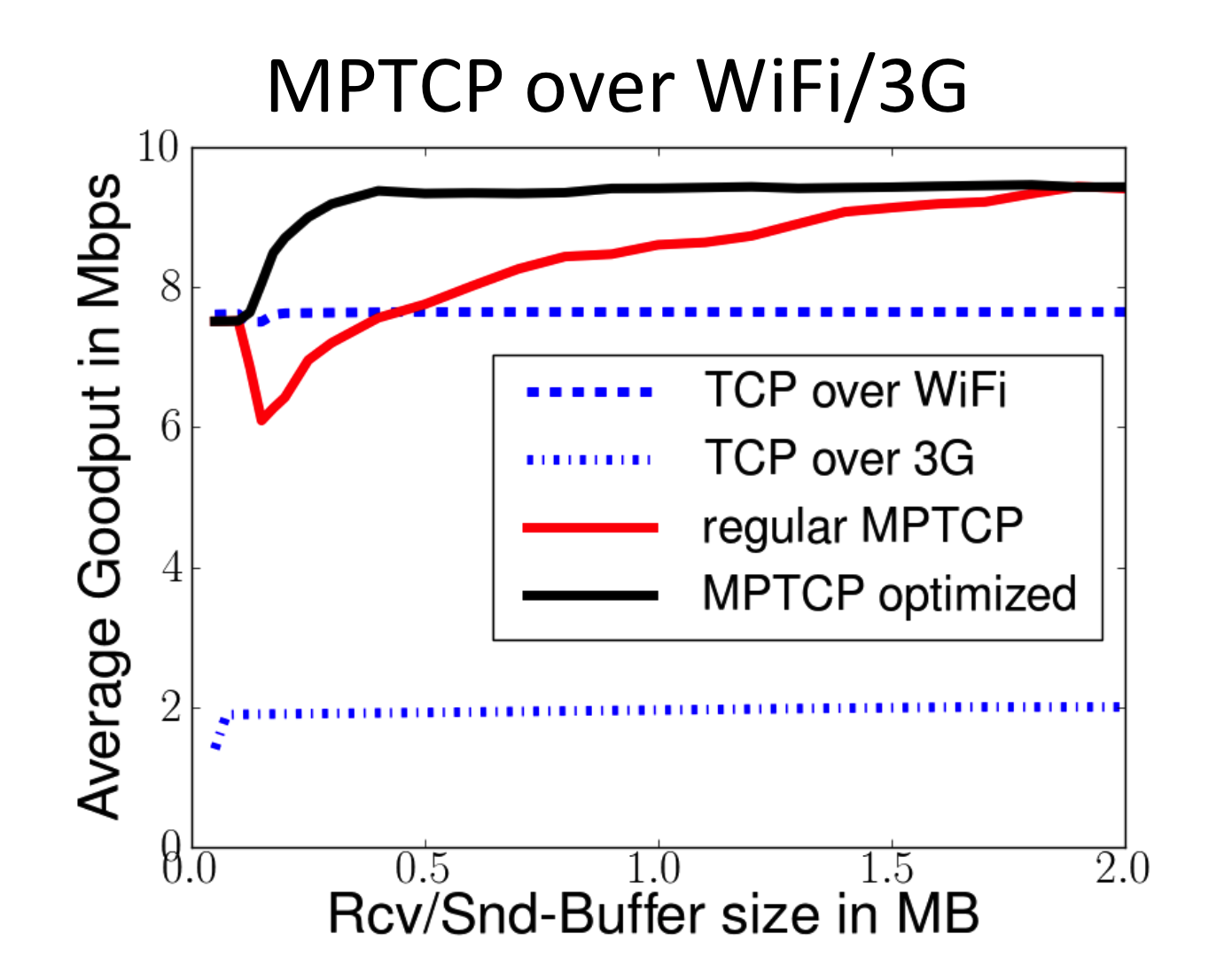Fixing problems before the submission deadline
In the academic community, paper submission deadlines are sometimes strong incentives that encourage researchers to find solutions to problems that they ignored until then. While preparing the final version of a paper [RPB+12] that describes the design and the implementation of Multipath TCP, we thought that it would be interesting to add some measurement results to confirm that the protocol worked well for the important use case of combining the Wi-Fi and cellular interfaces on smartphones. We had already performed various experiments with such wireless networks and were expecting that the results could be obtained in a few hours.
Our initial objective was to meet one of the functional goals of as described in RFC 6581 :
- *Improve Throughput: Multipath TCP MUST support the concurrent use
- of multiple paths. To meet the minimum performance incentives for deployment, a Multipath TCP connection over multiple paths SHOULD achieve no worse throughput than a single TCP connection over the best constituent path.*
We created a small measurement setup in the lab by using two servers connected over Gigabit Ethernet with tc.

We first verified whether TCP could use the two wireless links when used alone. This was indeed the case as shown in the figure below (source [RPB+12]).

For this measurement, we looked at the impact of the receive window on the measured throughput. For TCP, the impact is low, except when the window is smaller than the bandwidth delay product, but this is not a surprise. When then ran the same experiments with the two interfaces with Multipath TCP. We were expecting some impact with a small window but did not anticipate the results shown below (source [RPB+12]).

When the maximum window is large, Multipath TCP aggregates the cellular and the Wi-Fi interfaces as expected. However, when the receive window is smaller, Multipath TCP can transfer at a rate which is small than regular TCP. This result was annoying and we were less than a week before the submission deadline. It was difficult to submit the paper without describing this basic use case in the paper. We organised daily teleconferences to understand the problem and then try to solve it.
tcpdump helped us to understand the problem by collecting packet traces. The main issue was the difference between the delay of the cellular link and the delay of the Wi-Fi link. We observe frequently the following situation in the packet trace. The server sent many packets over the Wi-Fi interface and one over the cellular interface. The acknowledgements were coming quickly from the Wi-Fi interface, but the sender had frequently to wait for an acknowledgement over the cellular interface. During these periods, the receive window was full and the sender could not transmit packets over the Wi-Fi link although it was idle. This was the explanation for the reduced throughput with the small receive window.
Once the problem was identified, the problem could be solved. The solution is composed of two parts. First, when Multipath TCP detects that it is window-blocked and there is some unacknowledged data, it tries to re-inject the data over another subflow whose congestion window is open. If this data is acknowledged quickly, then the receiver will advertise a large receive window that will enable the sender to transmit. Unfortunately, this is not sufficient as the same situation could happen again later. The second part of the solution is to penalise the slow subflow by halving its congestion window. These two elements of the solutions fixed the problem over Wi-Fi and cellular.

This heuristic was later improved after a detailed experimental evaluation over a wire range of network conditions [PKB13].
References
| [PKB13] | Christoph Paasch, Ramin Khalili, and Olivier Bonaventure. On the benefits of applying experimental design to improve multipath tcp. In Proceedings of the ninth ACM conference on Emerging networking experiments and technologies, 393–398. ACM, 2013. URL: https://inl.info.ucl.ac.be/publications/benefits-applying-experimental-design-improve-multipath-tcp. |
| [RPB+12] | (1, 2, 3) C. Raiciu, C. Paasch, S. Barre, A. Ford, M. Honda, F. Duchene, O. Bonaventure, and M. Handley. How Hard Can It Be? Designing and Implementing a Deployable Multipath TCP. In Proceedings of the 9th Symposium on Networked Systems Design and Implementation (NSDI). 2012. URL: https://inl.info.ucl.ac.be/publications/how-hard-can-it-be-designing-and-implementing-deployable-multipath-tcp.html. |